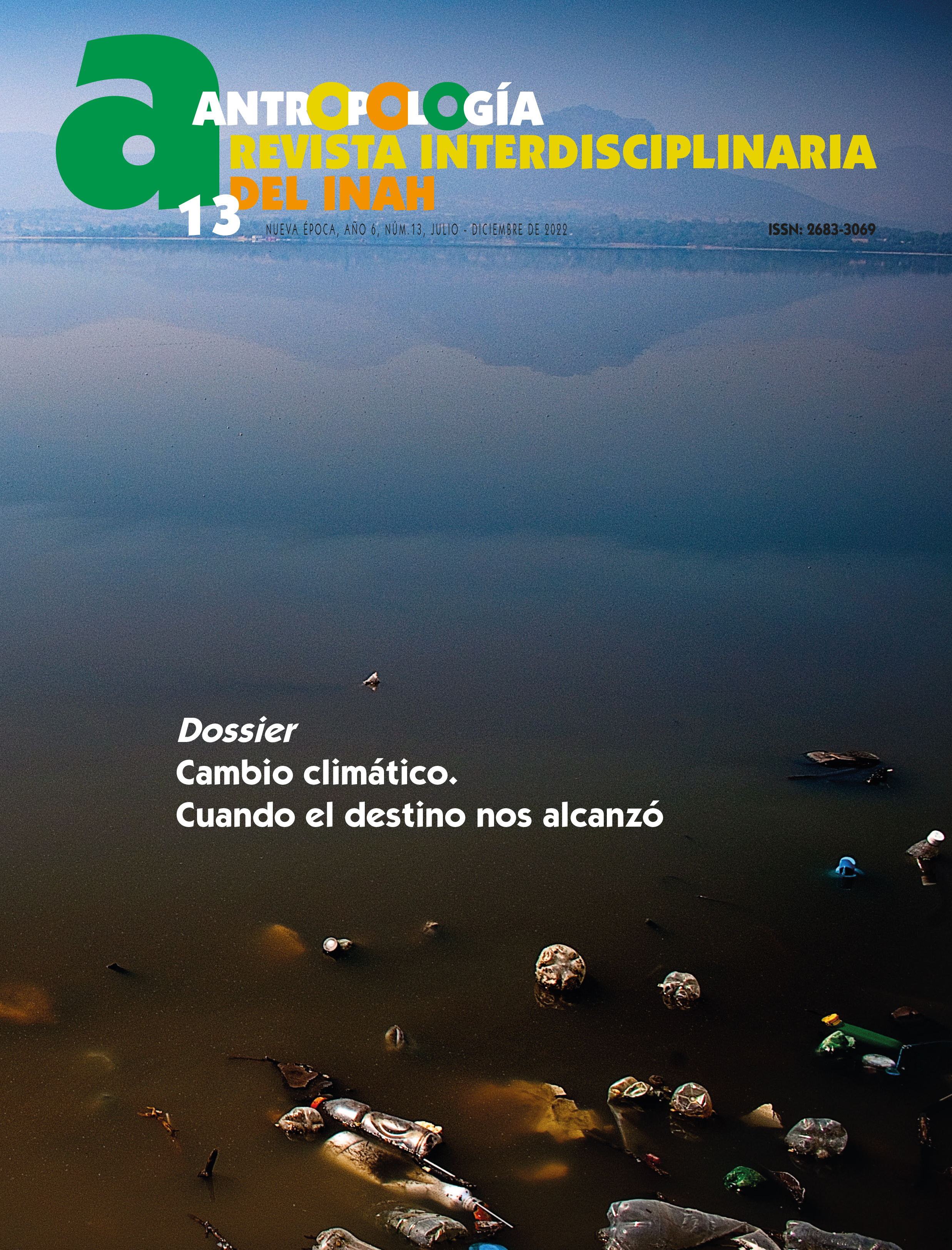Publicado 2024-04-10
Palabras clave
- ritual, propuesta relacional, teoría antropológica.
Cómo citar
Relacionalidad. (2024). Antropología. Revista Interdisciplinaria Del INAH, 13, 107-117. https://revistas.inah.gob.mx/index.php/antropologia/article/view/21112
Resumen
En el presente texto, Michel Houseman realiza una síntesis de los planteamientos centrales de la propuesta relacional para el estudio de rituales, inicialmente elaborada junto con Carlo Severi en la revisión de la obra Naven de Gregory Bateson.
Descargas
Los datos de descarga todavía no están disponibles.
Referencias
- AIRENTE, G. (2001), “Le role des representations dans le développement de la capacité communicative”, Intellectica, núm. 32, pp. 155-183.
- BARRAUD, C., y J. D. M. PLATENKAMP (1990) “Rituals and the comparison of societies”, Bijdragen Tot de Taal-, land- en Volkenkunde, vol. 146 pp. 103-124.
- BATESON, G. (1958 [1936]), Naven. A survey of the problems suggested by a composite picture of the culture of a New Guinea tribe drawn from three points of view, 2a. ed., Stanford, Stanford University Press.
- _____ (1972), Steps to an ecology of mind, Nueva York: Random House.
- BLOCH, M. (1974) “Symbols, song, dance and features of articulation. Is religion an extreme form of traditional authority?”, European Journal of Sociology, vol. 15, pp. 55-81.
- KAPFERER, B. (1991 [1983]), A celebration of demons. Exorcism and the aesthetics of healing in Sri Lanka, Oxford, Berg Publishers.
- GLUCKMAN, M. (1962), Essays on the Ritual of Social Relations, Mánchester, Manchester University Press.
- HANDELMAN, D. (1998 [1990]), Models and Mirrors. Towards an Anthropology of Public Events, Nueva York, Berghahn Books.
- HOUSEMAN, M. (1993), “The interactive basis of ritual effectiveness in a male initiation rite”, en P. BOYER (ed.), Cognitive aspects of religious behavior, Cambridge, Cambridge University Press, pp. 207-224.
- _____ (1999), “Quelques configurations relationnelles de la douleur”, en F. HERITIER (ed.), De la violence II, París, Odile Jacob, pp. 77-112.
- _____ (2000), “La percezione sociale delle azioni rituali”, Ethnosistemi, núm. 7, pp. 67-74.
- _____ (2001), “Is this play? Hazing in French preparatory schools”, Focaal. European Journal of Anthropology, vol. 37, pp. 39- 47.
- _____ (2002), “Dissimulation and simulation as modes of religious reflexivity”, Social Anthropology, vol. 10, núm. 1, pp. 77-89.
- _____ (2003), “Vers un modèle anthropologique de la pratique psychothérapeutique”, Thérapie Familiale, núm. 24, núm. 309-332.
- HOUSEMAN, M., y C. SEVERI (1998 [1994]), Naven or the other self: A relational approach to ritual action, Leiden, Brill Publications.
- HUMPHREY, C., y J. LAIDLAW (1994), The archetypal actions of ritual. A theory of ritual illustrated by the Jain rite of worship, Oxford, Clarendon Press.
- LEVI-STRAUSS, C. (1971), L’Homme nu. Mythologiques IV, París, Plon.
- RAPPAPORT, R. A. (1979), Ecology, meaning and religion, Berkeley, North Atlantic Books.
- SCHIEFFLIN, E. (1985), “Performance and the cultural construction of reality”, American Ethnologist, vol. 12, pp. 707-724.
- SEVERI, C. (1993), “Talking about souls. On the pragmatic construction of meaning in Cuna ritual language”, en P. BOYER (ed.), Cognitive aspects of religious symbolism, Cambridge, Cambridge University Press: 165-182.
- _____ (2002), “Memory, reflexivity and belief. Reflection on the ritual use of language”, Social Anthropology, vol. 10, núm. 1, pp. 23-40.
- STAAL, F. (1979), “The meaninglessness of ritual”, Numen, vol. 26, pp. 2-22.
- STANEK, M. (1983), “Les travestis rituels des Iatmul”, en F. LUPU (ed.), Océanie: le masque au long cours, París, OuestFrance.
- STRATHERN, M. (1988), The gender of the gift: Problems with women and problems with society in Melanesia, Berkeley, University of California Press.
- TAMBIAH, S. J. (1985), Culture, thought and social action. An anthropological perspective, Cambridge, Harvard University Press.
- TAYLOR, A.-C. (2003), “Les masques de la mémoire. Essai sur la function des peintures corporelles jivaro”, vol. L’Homme, núm. 165, pp. 223- 247.
- TURNER, V. (1967), The forest of symbols. Aspects of Ndembu ritual, Ithaca, Cornell University Press.
- VIVEIROS DE CASTRO, E. (1992), From the enemy’s point of view. Humanity and divinity in an Amazonian society, Chicago, University of Chicago Press.

